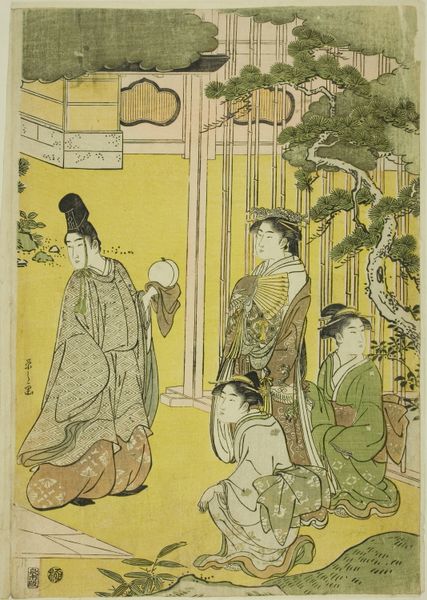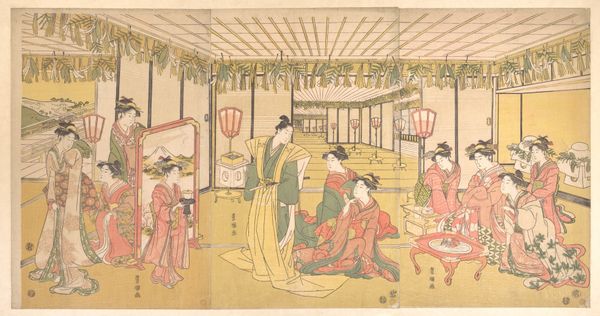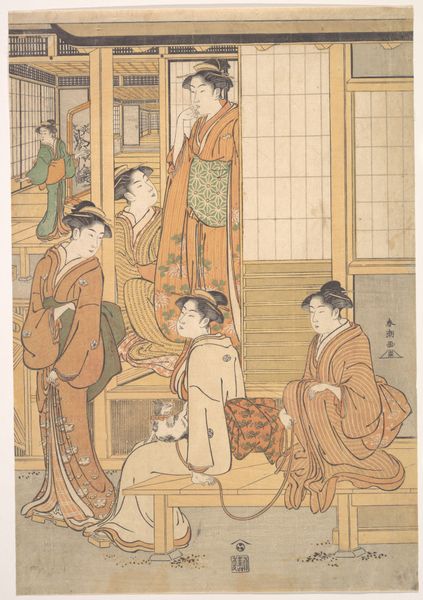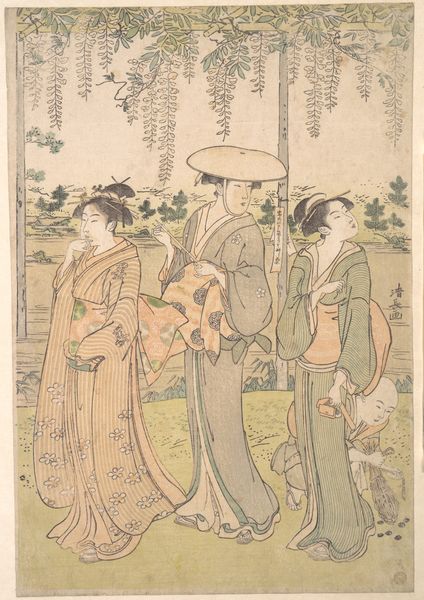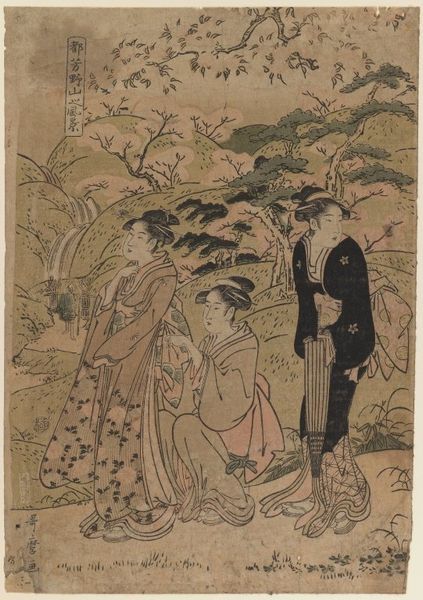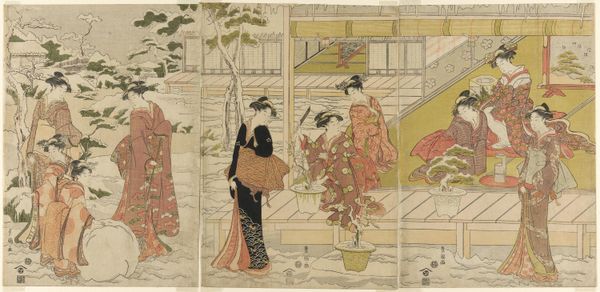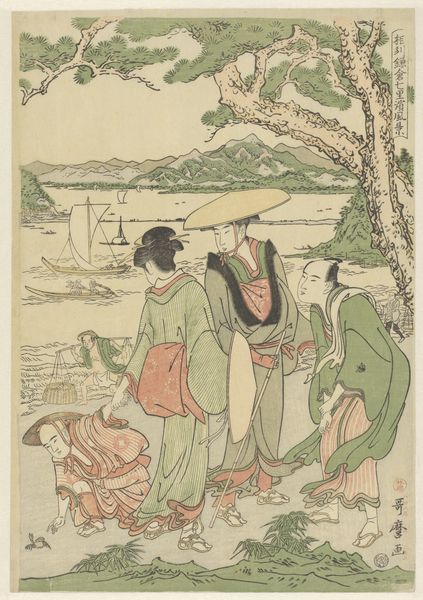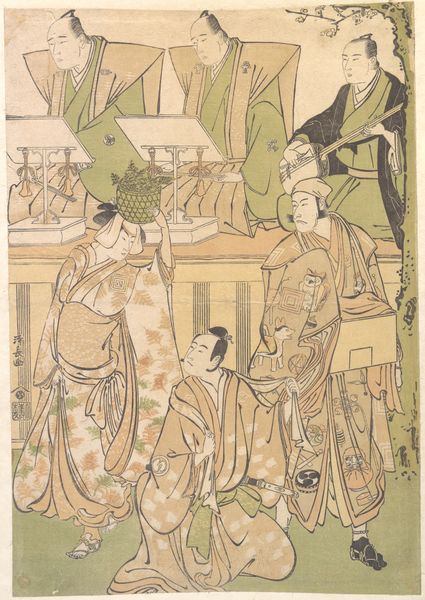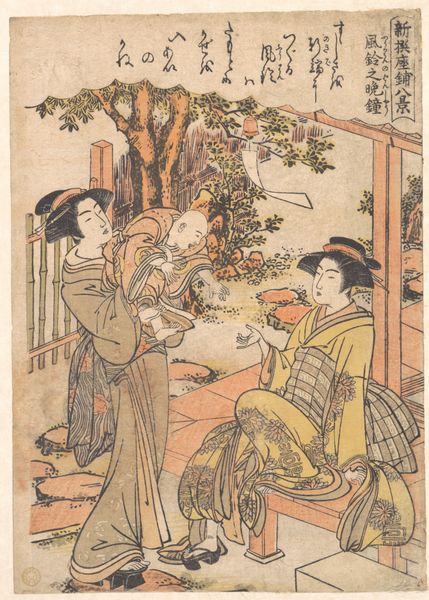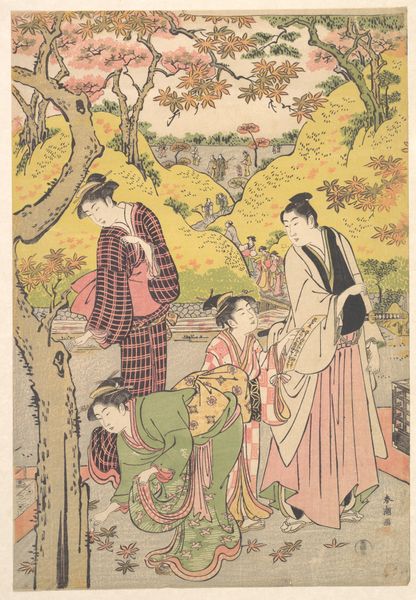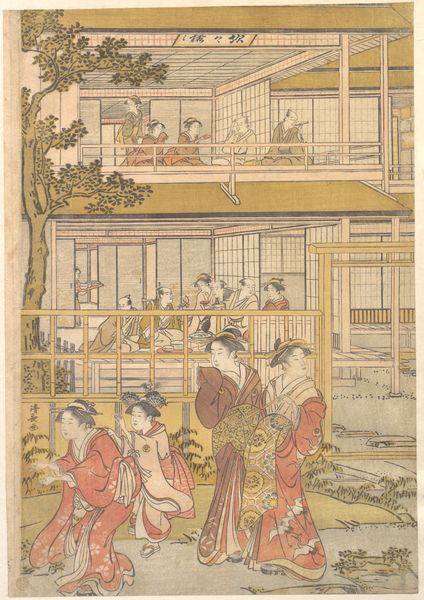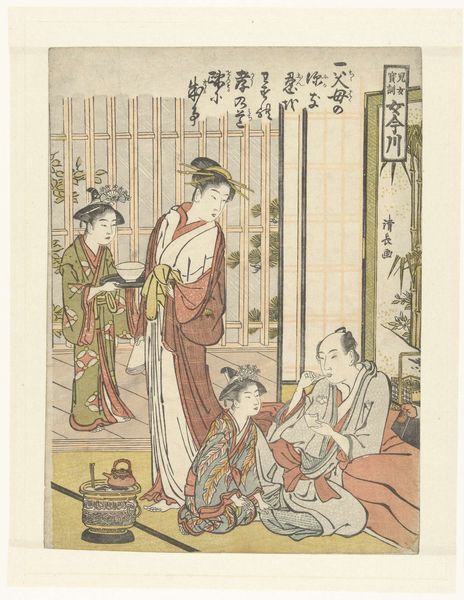
woodblock-print
#
narrative-art
#
asian-art
#
landscape
#
ukiyo-e
#
figuration
#
woodblock-print
#
genre-painting
Dimensions: 253 mm, 187 mm
Copyright: Rijks Museum: Open Domain
Curator: This woodblock print, titled "Four Boys Playing by a Peony Bed," was created by Torii Kiyonaga sometime between 1781 and 1785. Editor: It's surprisingly joyful! There's an immediacy, a liveliness in their movements. The rough-hewn bamboo fence makes me think about process. How the surrounding environment contributes. Curator: The peonies certainly set the stage. Peonies, often associated with wealth and beauty, were symbols layered with social significance. To contextualize it, ukiyo-e prints were made for the merchant class; how does this imagery play into the merchant's aspiration to rise in prominence within their social system? Editor: Ukiyo-e often portrayed fleeting pleasures. The peony, and the boys at play—that ephemeral quality strikes me more than notions of aspiration. The flat planes of color, achieved by applying layer upon layer of woodblocks—all carefully considered, of course. But look at the paper itself, how its fibers interact with the ink; that labor-intensive creation becomes a study of temporality. Curator: You make an excellent point. Labor becomes less about commodity when thinking about time and beauty here. How does their gender factor in, though? Notice how their hairlines are still partially shaven. They are not yet fully adults, or even teenagers, not yet fully within the socio-economic system of adulthood. How does this piece complicate notions of maturity or beauty in gender performance? Editor: Considering the relationship between childhood and work helps, as it emphasizes their developing identity. Looking closer at those robes too, and imagining the work that goes into creating them, from weaving the cloth to applying the delicate dye work, you can see an effort to not just illustrate something beautiful but make a depiction that has weight and dimension to it. Curator: Thinking about it now, this isn't just a lighthearted genre scene but a careful meditation on social, economic, and gendered systems and expectations within Edo-period Japan. Editor: A dance, maybe. Each element contributes something new and different—yet still working toward the creation of something entirely unexpected.
Comments
No comments
Be the first to comment and join the conversation on the ultimate creative platform.
